If the suspension of Japanese badminton star Kento Momota is indeed lifted next month, how seamless a transition can he really make to international competition?
By Miyuki Komiya. Photos: Badmintonphoto
Kento Momota disappeared suddenly from world class badminton competition last April after he was suspended by the Nippon Badminton Association (NBA) for gambling in illegal casinos. According to remarks made recently in the Japanese press by NBA Executive Director Kinji Zeniya, Momota’s ban may end as early as April 10th. Interestingly, an earlier date is not possible because he is being required to remain suspended until after the April 9th return of team-mate Akira Koga (pictured below), a national B team player who was censured for a single visit to a casino.
Unfortunately, this doesn’t mean that Kento Momota (pictured left) will automatically be right back into international tournaments and in fact, the internal rules of Japanese badminton may mean that his comeback to the biggest international tournaments won’t be until 2018.
Exhibit A: The Sudirman Cup
Unlike the World Championships, from which Momota will be excluded on account of having no international results during its 12-month qualifying period, a team event like the Sudirman Cup is theoretically possible since team selections are left completely to the discretion of the national association. However, Momota still has virtually no chance of being selected for Japan’s 2017 Sudirman team.
The NBA selects its Sudirman team members from among the current national team. But with Japan’s rigid national team selection system, Kento Momota cannot come right back to the national team.
In Japan, the national team for the coming year is selected by the NBA each December. In singles, the NBA normally selects 4 players for the A Team: the All Japan Championship finalists and #1-ranked player in Japan take the first 3 spots and the rest go to the player(s) who had good results in the previous year. For example in 2017, Kenta Nishimoto and Kazumasa Sakai were finalists in the All Japan Championship in December 2016. Momota was still #1 in Japan’s national rankings even as of early February but he was ineligible at the time of team selection so All Japan bronze medallist Takuma Ueda and All University Champion Yu Igarashi took the remaining spots.
The 2017 national team already has a full roster and the NBA rules say that it will choose its Sudirman team from among the national team members.
Exhibit B: Other international tournaments
Even when it comes to joining other international tournaments Momota’s chances are still close to 0, at least for the time being.
The NBA does allow non-national team players to participate in international tournaments but the numbers and the level of the tournaments are limited by a player’s result in the All Japan Championship. Even if a player has a high world ranking, the NBA still will not allow them to enter Superseries tournaments if they are not on the national team. Momota may be ranked #1 in Japan, but he was barred from participating in the All Japan Championship in 2016 so he is still not eligible to participate in international tournaments this year.
So when can Momota make a full comeback?
Kento Momota will qualify in June to participate in the All Japan Championship in December because he will keep his #1 ranking for Japan. If he can reach the final in that tournament, then he can get back onto the national team. That means that the All England in 2018 is likely to be his next Superseries.
Meant to be ‘broken’
On paper, Momota’s chances of playing major tournaments in 2017 are basically zero, according to NBA rules. But almost all rules have exceptions.
In Momota’s case, if he is cleared to begin playing again from April, he can participate in the ranking circuit event in May. This is one of the biggest tournaments in Japan and players ranked within the top 32 nationally can participate so he will be eligible to play in the tournament if his ban is lifted in April.
The national team sometimes picks up the winner from that tournament, so if Momota were to win the title, the NBA might decide to add him to the national squad. This could give him the opportunity to play in international tournaments, where he will start from scratch with 0 world ranking points.
This could mean he might be able to play in the U.S. Open at the earliest, or perhaps the Japan Open, which is the only Superseries event available to Japanese players not on the national A team.
Of course, the NBA wants Momota to make a full comeback. But at the same time, they have historically proven to be quite strict when it comes to applying the rules for non-national team players. Ayumi Mine has kept her world ranking around 20, but she has not been allowed to enter any Superseries tournaments apart from the Japan Open because she is not on the national team. This suggests that the NBA is not likely to give special treatment only to Momota, even if he has proven to be a special talent.
The road to the Tokyo Olympics 2020
Momota has already been training with his company team for half a year without playing in any competitions. If he has managed to maintain his skills and fitness at the level he demonstrated before his suspension, he is very likely to be back on the national team by January 2018. With Olympic qualification starting from May 2019, that gives him ample time to come back. Of course, all Japanese players aim to participate in the Tokyo Olympics. Needless to say, no player will find it easy to qualify for the Olympics, but Momota has been training hard to come back to the elite of world badminton
![Post-comeback complexities for Kento Momota? If the suspension of Japanese badminton star Kento Momota is indeed lifted next month, how seamless a transition can he really make to international competition? By Miyuki Komiya. Photos: Badmintonphoto […]](http://www.badzine.net/wp-content/uploads/ngg_featured/20151112_1636_ChinaOpen2015_Yves4296_rotator.jpg)
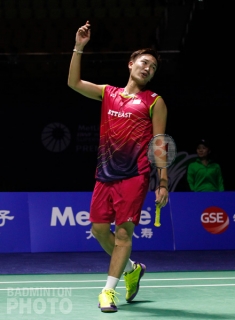
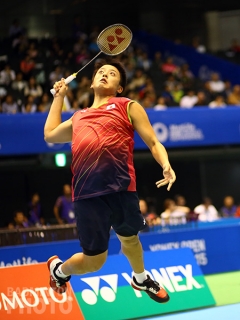
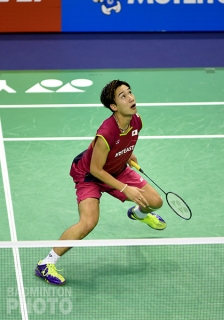
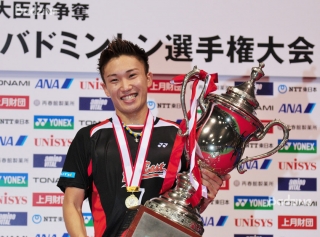

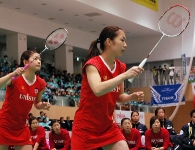
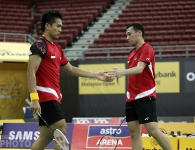
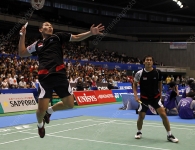
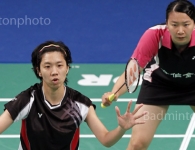
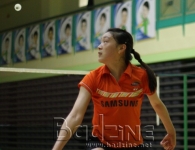
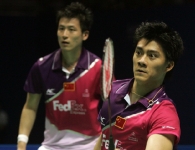
Leave a Reply to Anonymous Cancel reply